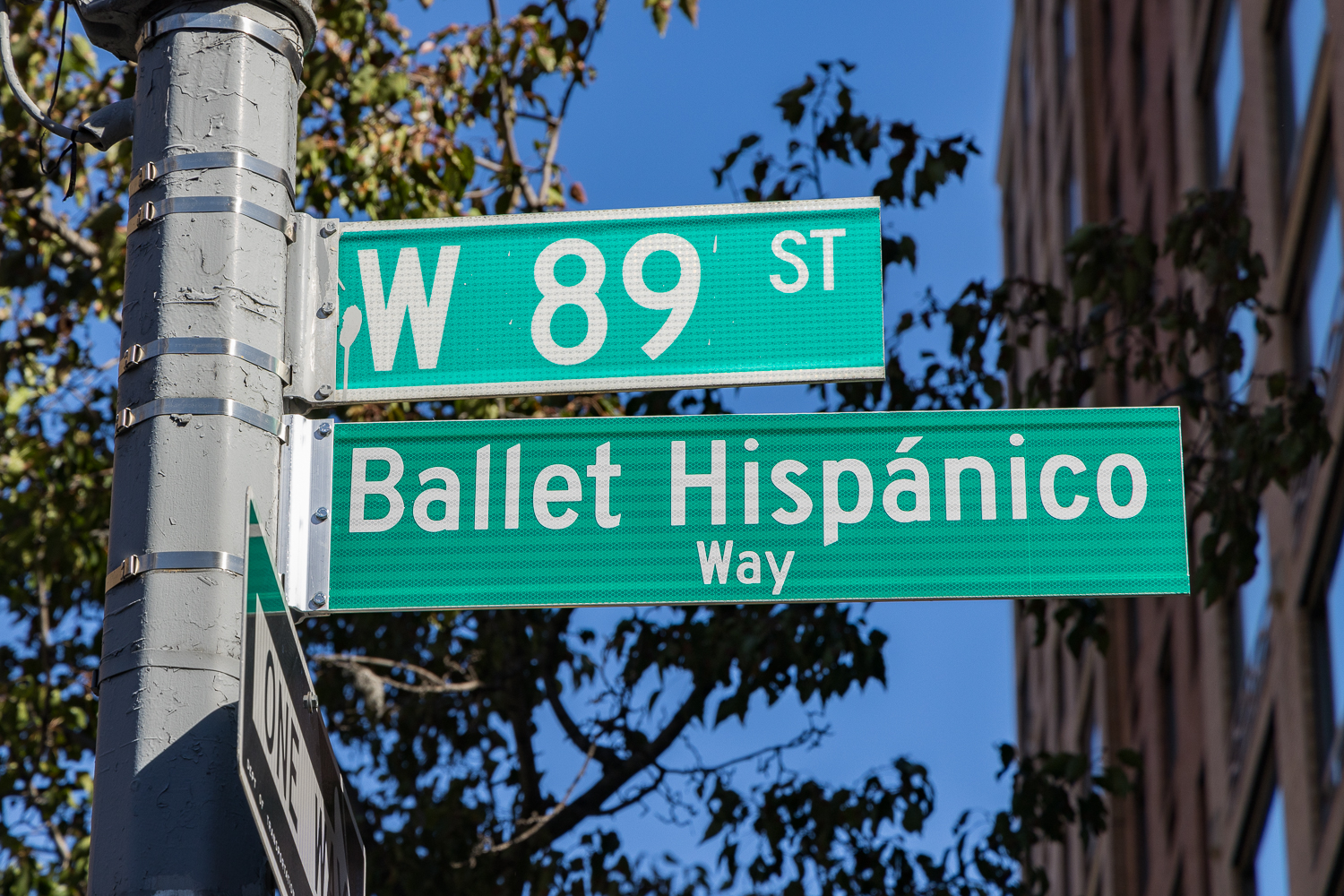
By Daniel Krieger
On a chilly autumn morning this past Thursday, under a clear blue sky, a throng of people gathered in front of the headquarters of Ballet Hispánico, the Latinx dance organization, on West 89th Street between Amsterdam and Columbus. They had come for a street co-naming ceremony that would culminate in the unveiling of a new secondary street sign that was years in the making.
Across the street from PS 166 and sandwiched between the Stephen Gaynor School and a garage, Ballet Hispánico has been at 167 West 89th Street since its founding in 1970 by Tina Ramirez, who died in September at 92. She launched Ballet Hispánico, as both a dance company and dance school oriented toward community engagement, with a grant of $20,000 from the New York State Council on the Arts, according to the New York Times, which called it “one of the most prominent Hispanic-American dance organizations in the country.”
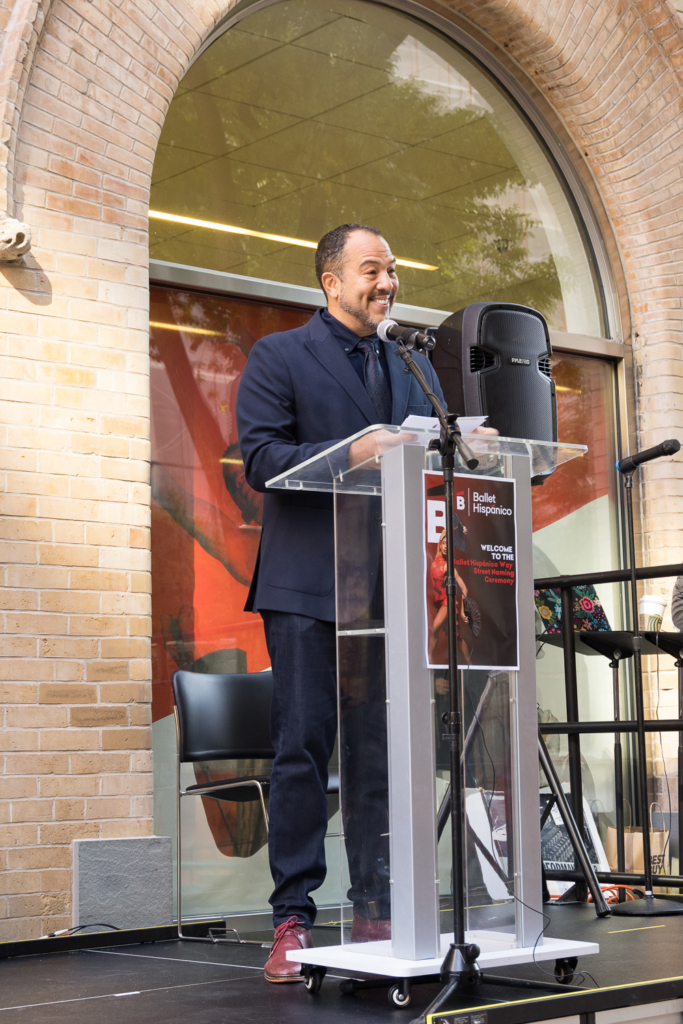
“The street naming was something that the Ballet Hispánico board of directors and I understood would be important as a stake in the ground saying, ‘We’re here, we’ve been here, and we’re not going anywhere,’” said Eduardo Vilaro, the artistic director and CEO of Ballet Hispánico, in an interview with WSR shortly before the ceremony.
He recalled being a young dancer with the Ballet Hispánico troupe in its early days before the neighborhood became what he called “the lovely Upper West Side,” saying, “We’ve been here as a grounding place for the community throughout these changes and we continue to be that space for young people, in particular Latinx people, to find joy and belonging.”
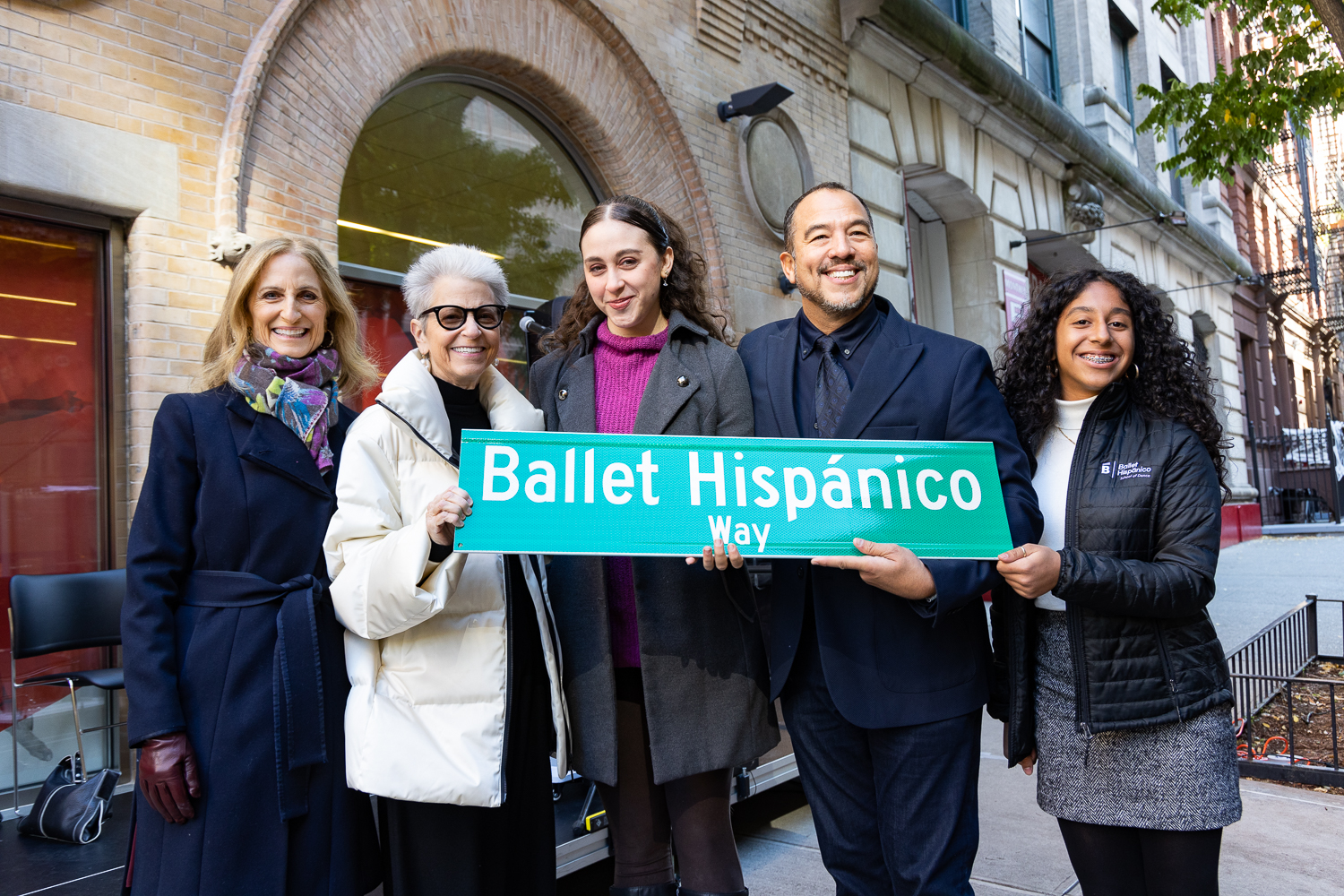
The process to co-name the street began about five years ago, he said. After lots of back and forth with the City Council, and numerous steps, including getting at least 100 signatures on a petition, confirmation that there were no objections, and letters of support from elected officials, they heard earlier this year that it was approved at last. The creation of this monument made him think back to the founder’s original vision to “give access to Latinx people, Latinos and Latinas, so they can find themselves in jobs in the arts,” he said, explaining the organization’s role as a gateway into the arts world.
As the emcee of the event, Vilaro kicked things off with brief remarks recapping all that Ballet Hispánico has offered over the years, from arts education to community engagement to scholarships. “Starting today,” he said, “this block of West 89th Street and Amsterdam Avenue will be officially co-named Ballet Hispánico Way,” drawing loud cheers from the audience, which included Ballet Hispánico staff, board members, former troupe dancers, and city officials, such as the Manhattan borough president, Mark Levine, who Vilaro called “a huge believer in the work we do at Ballet Hispánico.”
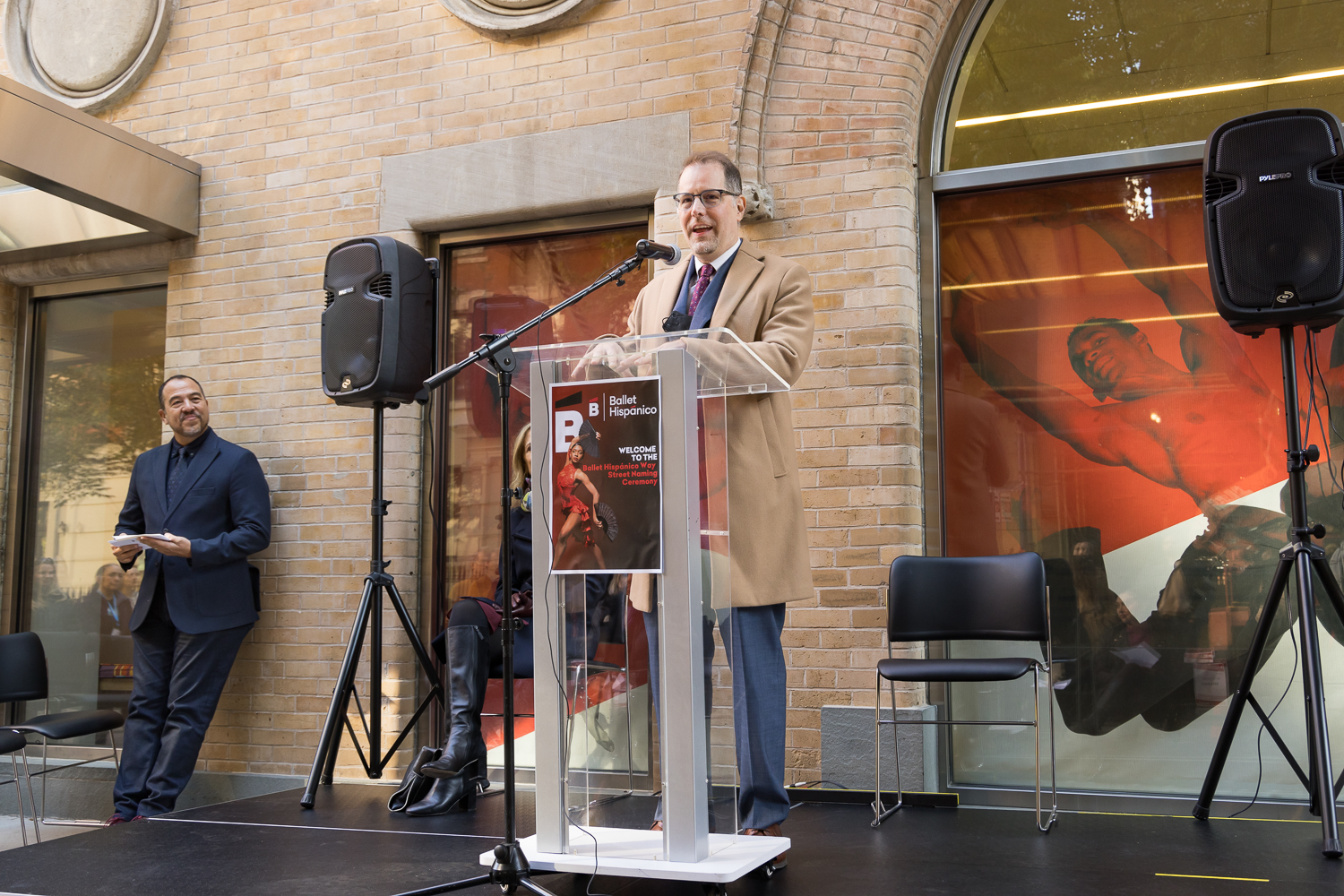
Levine later spoke, and referred to the Upper West Side as “a community with arts in its DNA.” He went on to praise Tina Ramirez for creating “this institution which is undoubtedly a national historic treasure.”
He waxed on Ballet Hispánico’s track record of extensive community outreach over the years and concluded by saying: “For generations to come, when young people look up and see that sign, they’ll know about what started here and what continues to thrive here — the amazing legacy of Tina and all of you.”
Vilaro concluded the ceremony by having the crowd walk over to the northeast corner of West 89th Street and Amsterdam where he dramatically pulled off the sign’s veil, revealing Ballet Hispánico Way for all to see.
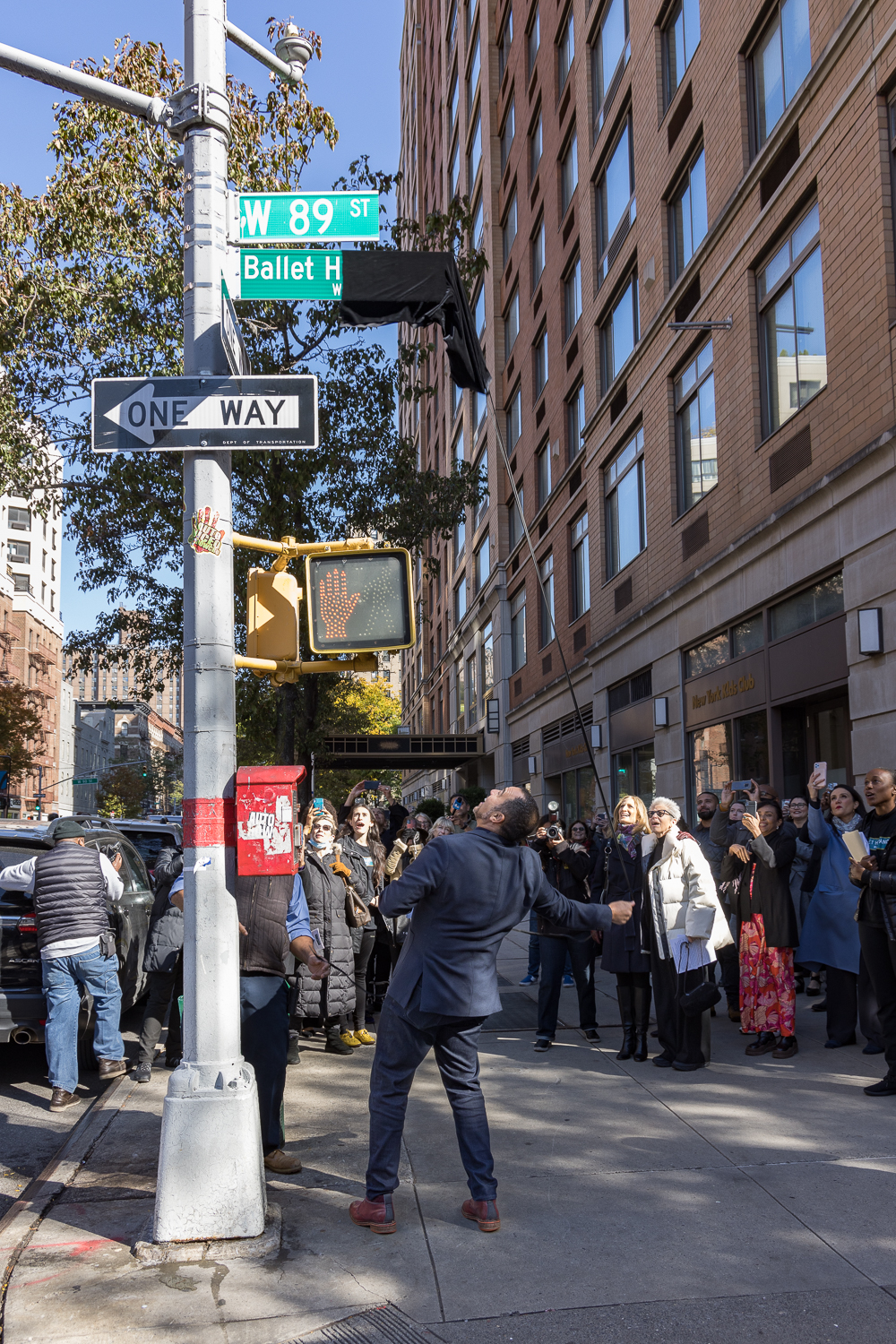









Why can’t Amsterdam Avenue and 94th Street honor Hettie Anderson who’s a biracial lady liberty on our old $10 and $20 gold coins issued before 1933 which were used in international trade when America was rising as world power? She lived on 689 Amsterdam Avenue.
It is so wonderful that Ballet Hispanico has been honored by the city.